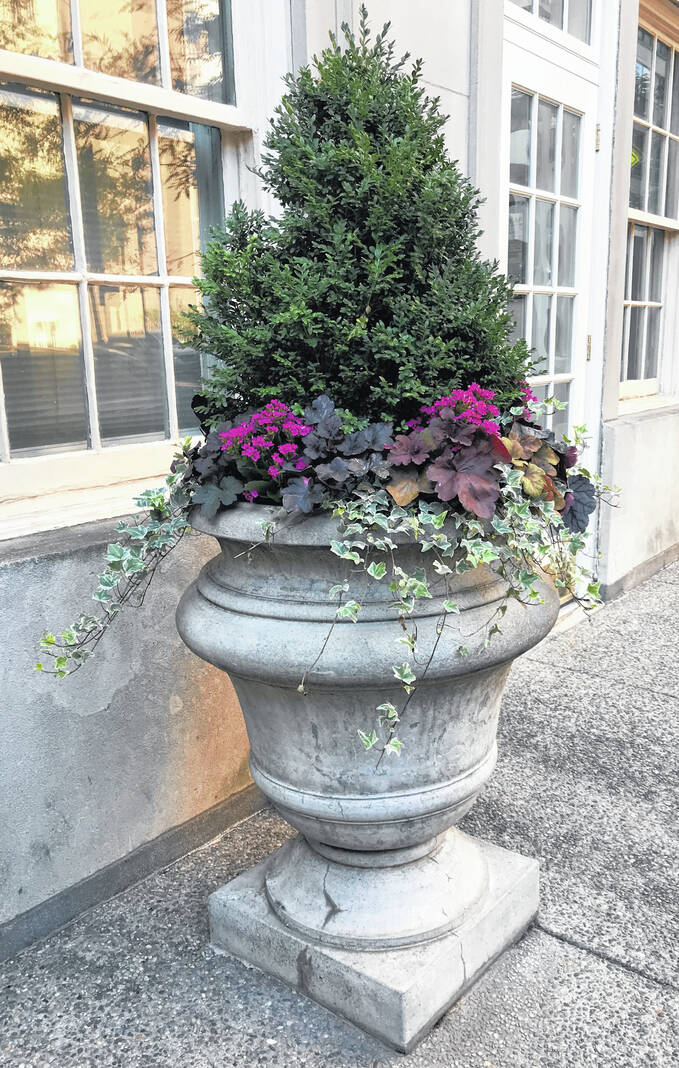
Steve Boehme

Decorative pots need to be large enough for the root system of your plants.
Plants grown in containers offer homeowners flexibility, whether the plants are houseplants indoors or colorful annuals on your porch or patio. Planting in containers allows you to easily move plants around, or change them out, if they don’t thrive. Tall planters allow you to garden without kneeling on the ground. Rabbits don’t nibble on container plants, and weeds don’t grow in them if you use sterile bagged potting soil.
In our gardens we use containers in the shrub beds around the yard, to add colorful annuals to the landscape. We set concrete stepping stones under the planter pots, using pea gravel to level the steppers. Annuals in pots don’t have to compete with the roots of other plants or trees, and the breathe and drain well, so they usually do better than annuals planted directly in the ground.
Plants can be grown in containers that are purchased, built, or recycled. Containers can be decorative and fancy, or simply plastic buckets or recycled nursery pots. Any container needs to have drain holes in the bottom to prevent root rot. Porous containers lose moisture more quickly and require more frequent watering than nonporous containers, but they are better for plants that prefer dry conditions, like geraniums, succulents and basil.
When container gardening outdoors, unglazed ceramic pots should not be used for plants that remain outside during the winter. These pots absorb water, which will freeze and crack the pot.
It can be very hard to pry root-bound plants out of pottery containers; sometimes the container gets ruined in the process, not to mention the trauma to the plant. We solve these problems by planting in workaday poly nursery containers, and using the decorative pot as an outer “cachepot”. This way if the plant outgrows the pot and becomes root bound you can easily up-shift it into a bigger pot, and your decorative cachepot can be re-used for another plant.
Be careful about using dark-colored or black containers in sunny spots. The pot can become very hot, killing the roots on the sunny side of the pot. Using a cachepot protects the inner pot from direct sun, solving this problem. It also reduces moisture loss, so you can water less frequently.
Drainage holes are necessary in all containers to prevent plant roots from standing in water and developing root rot. If the container sits flat on a solid surface such as a paved patio, drainage holes should be along the side of the container, not the bottom, unless you set the pot on “pot feet” of some kind. A container’s size should match the size of the plant’s root system. Interior plants grow best in pot sizes that are one size larger than their root system.
Because plants grown in containers are restricted to the amount of soil in the pot, high-quality potting mixes are essential to supply the roots with nutrients, air, and water. The potting “soil” used to grow container plants is really not soil at all. We go into the details of potting soils in next week’s column.
Steve Boehme is a landscape designer/installer specializing in landscape “makeovers”. “Let’s Grow” is published weekly; column archives are online at www.goodseedfarm.com. For more information call GoodSeed Farm Landscapes at (937) 587-7021.

